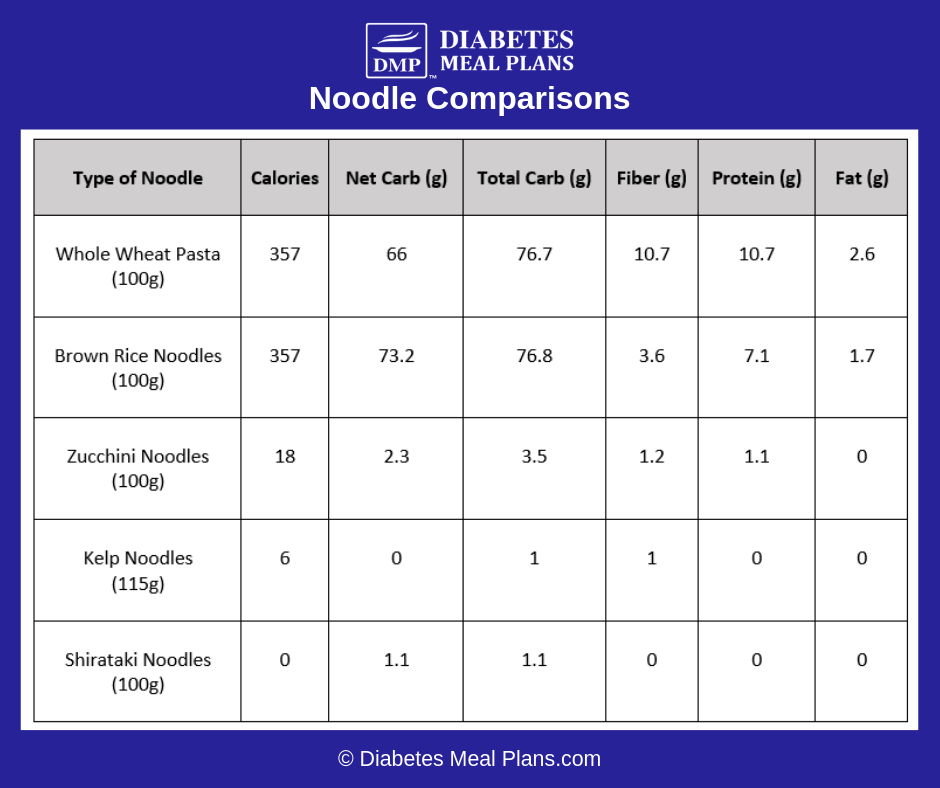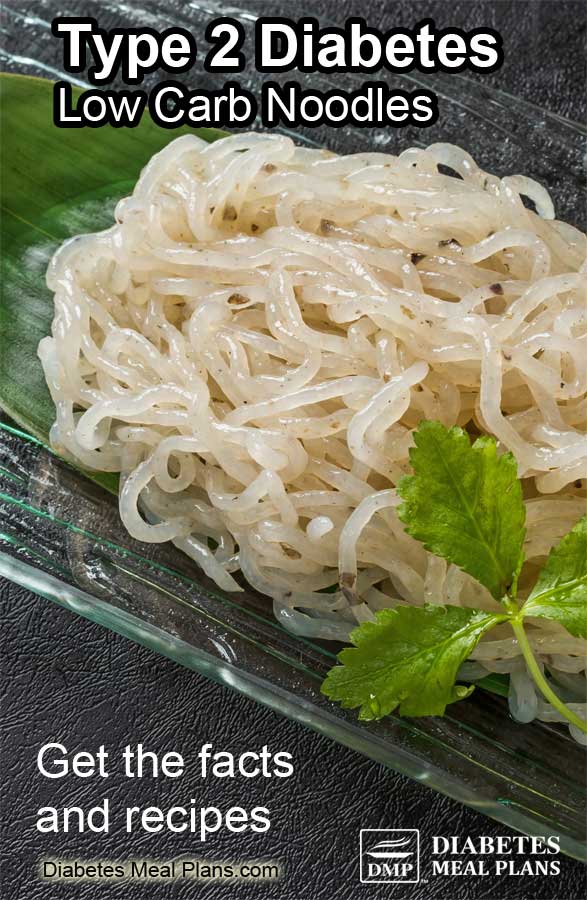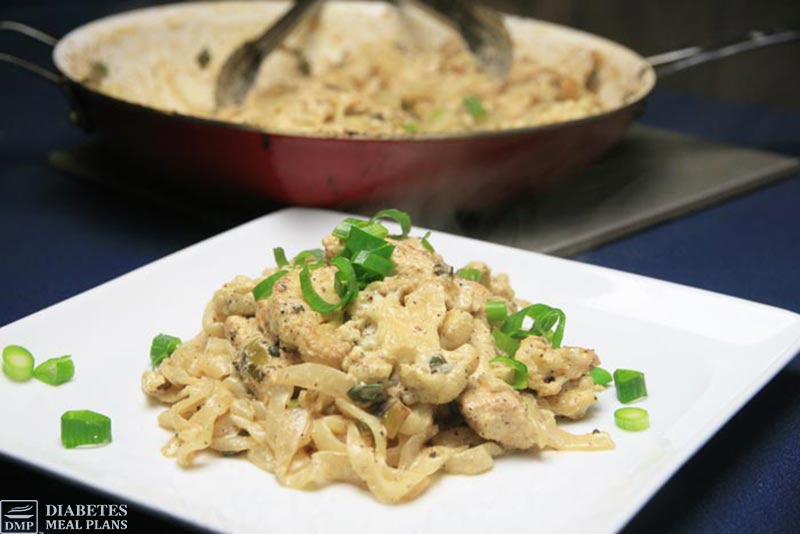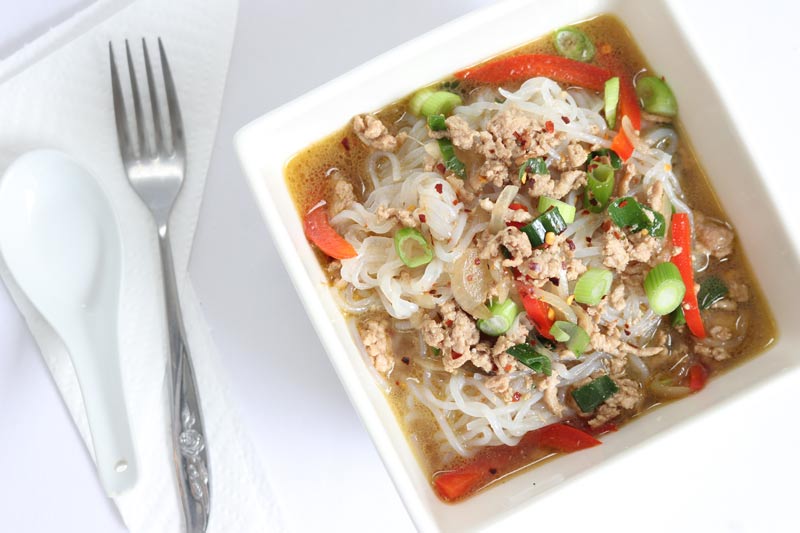Table of Contents[Hide][Show]
If you’re looking for the perfect noodles for diabetes, look no further. Shirataki noodles are low in calories, super low in carbs and even have benefits to share.
Keep reading to learn what they are, nutrition facts and how to use them.

What are Shirataki Noodles?
Shirataki noodles are long, white, translucent noodles derived from the konjac plant. The konjac plant is primarily found in Asia and Africa. The plant has many uses but is primarily used as a gelatin substitute and to thicken or add texture to foods. It’s also used in traditional Chinese medicine. And of course, the konjac plant provides wonderful noodles.
To make shirataki noodles the corm of the konjac plant is used. The corm is the tuber-like part of the stem that grows underground. The corm contains a rich source of soluble dietary fiber called glucomannon.
Glucomannon can be beneficial for a variety of conditions – from weight loss to gut health to lowering cholesterol; and most importantly its beneficial for people with type 2 diabetes and prediabetes!
Shirataki Nutrition Facts
For a 4 ounce (113 g) serving:
- 10 calories
- 3 grams carbohydrates
- 3 grams fiber
- 0 net carbs
- 0 grams protein
Shirataki noodles contain a lot of water. In fact, they are about 97% water and 3% glucomannan fiber.
Due to the fiber content of the noodles, the net amount of carbohydrates in shirataki noodles is zero – meaning they are very friendly for blood sugar levels!
Some varieties of shirataki noodles contain tofu. Though even when they do the carbohydrate content is still low so they are perfectly fine to eat. But just be aware that if you need to avoid soy, these would not be a suitable option – check the ingredients.
Shirataki Compared with Other Noodles

As you can see, compared to whole wheat or gluten free rice pasta, shirataki noodles are way lower in carbohydrate content.
Shirataki noodles are also the lowest calorie option compared to all other types of noodles.
Research & Health Benefits of Shirataki Noodles for Type 2 Diabetes
Due to its soluble fiber content, the glucomannon found in shirataki noodles has been shown to improve blood glucose levels.
Soluble fiber helps slow the absorption of carbohydrates, which reduces the elevation in blood sugar levels after consumption.
Soluble fiber also acts as a prebiotic by feeding the bacteria living in your colon, also known as the gut flora or microbiota. The bacteria turn into short-chain fatty acids, which can fight inflammation, boost immune function and provide other health benefits.
Unfortunately, most people don’t get nearly enough fiber in their diet despite the vast array of research showing its positive impact on human health. One study found the average fiber intake for Americans is 16.2 grams per day which is a far cry from the recommended amount for adults which is between 25-38 grams per day. This issue of low fiber intake is not just in Americans, but is common around the globe.
So what about research on shirataki and the glucomannan fiber it contains?
One study in individuals with type 2 diabetes found that taking a glucomannan supplement before consuming a lot of carbohydrates reduced levels of the hunger hormone ghrelin. Ghrelin signals your brain to eat so reducing this hormone during a meal would potentially help an individual eat less.
Participants with diabetes in one study taking a konjac glucomannon (KGM) supplement of 3.6 grams per day over a 28 day period were able to improve their fasting blood glucose levels by 23.2%, along with reducing total cholesterol levels by 11.1%.
In a 6 week crossover study in people with type 2 diabetes, glucomannan supplementation helped alleviate the elevation of after meal glucose levels, improve cardiovascular markers, and enhance weight loss.

How to Use Shirataki Noodles
Shirataki noodles are very easy to prepare because you purchase them ready-to-eat.
The only downside is the noodles are packaged in a fishy smelling liquid. This smell can be a turn off at first but rinsing them off well will help remove the odor. This odor is simply from the water absorbing the odor of the konjac root.
So step 1: drain the liquid from the noodles and rinse very well. Under warm water seems to rid the smell better than cold water rinsing.
Next, you can simply add them to your dish to heat through or place them in hot water to heat.
Shirataki noodles can also be purchased dry, though these are less common.
Shirataki noodles can be used in any dish where you want to replace the noodles or pasta.
Shirataki noodles come in different types of pasta shapes such as fettuccine, penne, and even lasagna!
Where to Buy Shirataki
Recently, most major grocery store chains sell one or two varieties of shirataki noodles, which you will probably find in the Asian cuisine section. Ask someone in the store, sometimes they are called ‘low carb noodles’ ‘low cal noodles’ konjac noodles’ or ‘Japanese noodles’.
If you have trouble finding them at your local grocery store you can purchase them in Asian supermarkets, or you can always purchase them online. Miracle Noodles is a popular brand, but there are also many others as these noodles are becoming more popular.
Shirataki Noodle Recipes
Creamy Mustard Chicken Noodles
Ground Turkey Ramen
Conclusion
Shirataki noodles are a great substitute for traditional noodles that tend to be higher in carbohydrates.
Due to the fiber content, shirataki noodles have zero net carbohydrates.
The research on glucomannon (the fiber found in shirataki noodles) shows positive benefits on blood glucose control along with other benefits such as reducing the hunger hormone before a carbohydrate meal.
Nowadays it is easy to find shirataki noodles in most grocery stores and preparing them is as simple as opening the package, rinsing, and heating them up.
You can dress the noodles up in a variety of flavors and enjoy a delicious, low carb noodle or pasta meal!



anju pahwa
ur menue is all non veg.i need veg etarian dishes for diabetics
Malorie: Dietitian (MS, RD, CLT)
Hello Anju,
Please check out our article on a vegetarian diabetic diet which includes some meal ideas. We also offer weekly diabetic meal planning with a vegetarian option.